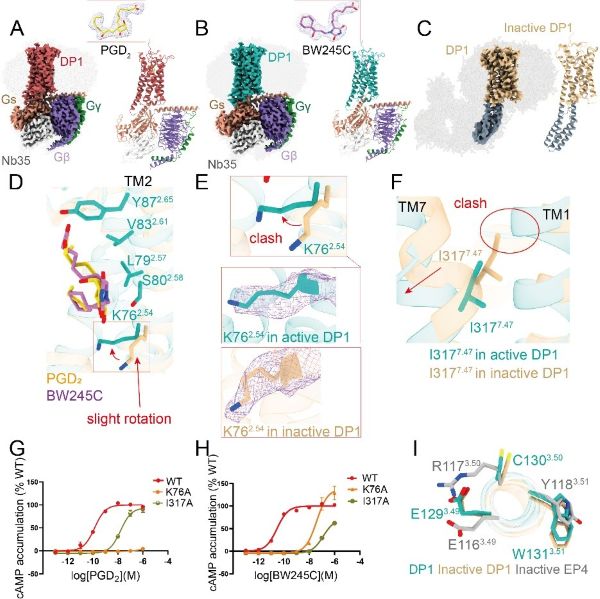Researchers Reveal Structural Basis of Prostaglandin D2 Receptor DP1 Activation and Its Implications for Drug Design
Recent breakthroughs in understanding the prostaglandin D2 (PGD2) receptor 1 (DP1) are paving the way for innovative anti-inflammatory and immunomodulatory therapies. DP1, a G protein-coupled receptor (GPCR), plays a key role in mediating allergic responses and inflammation. Although several DP1-targeting compounds have been identified, their clinical uses have been limited by lack of detailed molecular understanding until now.
In a study published in PNAS on May 29, a research team led by Eric H. Xu (XU Huaqiang) and WU Canrong from the Shanghai Institute of Materia Medica (SIMM) of the Chinese Academy of Sciences unveiled high-resolution structures of human DP1.
Using advanced cryo-EM techniques, researchers resolved the structures of DP1 in both its inactive and active states. The active state was imaged in complex with either its natural agonist PGD2 or the synthetic agonist BW245C, bound to stimulatory G protein, Gs, with resolutions of 2.72 Å and 2.35 Å, and the inactive structure at 3.41 Å resolution. Combined with functional and mutagenesis studies, these structures revealed unique features of DP1, including an alternative activation mechanism, determinants of ligand selectivity, and characteristics of G protein coupling. Notably, DP1 lacks the conserved W6.48 activation switch and the typical D/ERY motif that is usually involved in GPCR activation, indicating that its activation mechanism is rather unique and not a conserved mechanism.
These molecular insights not only complete the structural framework of PGD2 signaling through its receptor family, but also provide a detailed blueprint for designing selective DP1-targeted drugs—both agonists and antagonists—with greater precision and fewer off-target effects. This work paved the way for new therapeutic strategies to treat inflammatory and allergic disorders linked to DP1.
DOI: 10.1073/pnas.2501902122
Link:https://doi.org/10.1073/pnas.2501902122

Figure: Molecular basis for ligand recognition and receptor activation of the prostaglandin D2 receptor DP1. (Image by XU’s lab)
Contact:
JIANG Qingling
Shanghai Institute of Materia Medica, Chinese Academy of Sciences
E-mail: qljiang@stimes.cn




